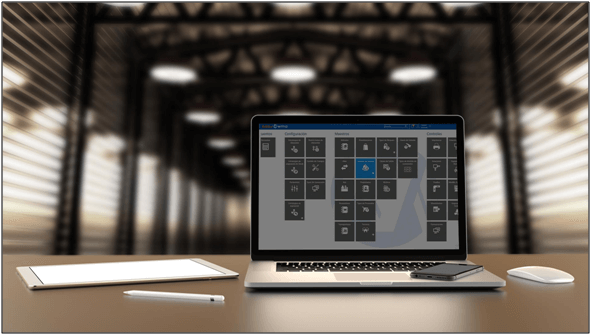Global System Integrators and Global Service Providers leverage CA Technologies help solve business-critical, IT management issues and create highly scalable, customized solutions that allow customers to automate, manage and secure physical, virtual and cloud environments with confidence.
Table of Contents
Warehouse Management System (WMS)
The WMS is vital because it helps control and manages day-to-day operations in a warehouse. It also can provide a solid foundation of the industry to best practices for receiving, put-away, inventory management, order processing, replenishment, picking or packing, as well as loading and shipping.
The warehouse management system can reduce the likelihood of errors that could occur when a product is shipped and help a company fulfill orders more rapidly and instantaneously trace ordered products within the warehouse.
Although the WMS can be complex and expensive to implement and run, however organizations can succeed with the benefits that can be justified, as follows:
• Improved Access of Information
• Improved Insight
• Improved Agility
• Better Collaborations
• Improved Productivity
• Improved Accuracy
• Reduced Training Time

Transportation Management System (TMS)
The TMS is a subset of supply chain management (SCM) that deals with the planning, execution, and optimization of the physical movements of goods. In simpler terms, it’s a logistics platform that enables users to manage and optimize the daily operations of their transportation fleets.
Over many years people have thought that the air cargo industry will diminish soon but it never. Some people have favored sea cargo over air cargo. But air cargo is the need of businesses because they can never transfer their unpreserved freight through sea cargo. Air cargo is reliable where everyone knows everything. The air cargo industry has abilities to overcome its technology tasks. Air cargo has collected statistics from customers and tried to deliver better facilities to advance their business.
Transportation Management System can help companies and supply chain professionals manage the freight and carriers.
A fully deployed transportation management system can benefit organizations from the following ways:
• Carrier contract management
• Risk management
• International logistics functionality
• Item visibility
• Parcel shipping support
• Freight settlement
• Business intelligence
• Benchmark data capability

Communications on Service Provider
We all know the importance of communication in our daily lives. Communication is even more valuable in a business environment as there are several parties involved. Various stakeholders, whether they are customers, employees or the media, are always sending important information to each other at all times. Therefore, we are using some form of communication to send a message. Effective communication plays a pivotal role in functioning a business.
Feature-rich platform Anytime, anywhere communications Always stay in contact and thereby improve the productivity Empowers remote staff/users Reduce costs with converged communications Reliable and supports localization One solution for all industries Real-time MIS & Dash Boards.

Real-Time Location System (RTLS)
The RTLS helps to automatically identify and track the geographic location of objects and people in real-time. Generally, RTLS is used within a building or facility area. In a Real-Time Location System, a wireless Real-Time Location System tag or badge can be attached to an object or worn by a person, and the signal transmitted from the tag is received by a single fixed reference point to help locate the exact location of a particular tag. Real-Time Location System includes location sensors, location readers, battery-powered tags, application software, and network infrastructure.
These are a few leading players in the Real-Time Location System market – STANLEY Healthcare, Zebra Technologies, Aruba Networks (HP Enterprise), Impinj, Savi Technology, TeleTracking Technologies, Ubisense Group, AiRISTA, Awarepoint, Identec Group, and Alien Technology.
The full content is only visible to SIPMM members
Already a member? Please Login to continue reading.
References
Alagappan Dasarathy, DLSM. (2018). “Integrating Warehousing and Transport Functions for EPC Project”. Retrieved from SIPMM: https://publication.sipmm.edu.sg/integrating-warehousing-transport-functions-epc-projects, accessed 18/06/2019.
Barley Li. (2017). “Real-Time Location System (RTLS)”. Retrieved from https://www.digikey.com/en/blog/real-time-location-system, accessed 19/06/2019.
HoKek Ming, DLSM. (2018). “Six Essential Areas for an Integrated Logistics System”. Retrieved from SIPMM: https://publication.sipmm.edu.sg/six-essential-areas-integrated-logistics-system, accessed 19/06/2019.
Iman Niroomand. (2017). “The importance of reverse logistics in your supply chain network”. Retrieved from https://blog.kinaxis.com/2017/09/importance-reverse-logistics-supply-chain-network/, accessed 20/06/2019.
Jeffry, M. (2016). “6-reasons-why-integrated-warehousing-distribution-works”. Retrieved from https://www.linkedin.com/pulse/6-reasons-why-integrated-warehousing-distribution-works-jeffery, accessed 18/06/2019.
PLS Logistics. (2018). “Benefits of a Transportation Management System (TMS)”. Retrieved from http://info.plslogistics.com/blog/benefits-of-a-transportation-management-system-tms, accessed 20/06/2019.

